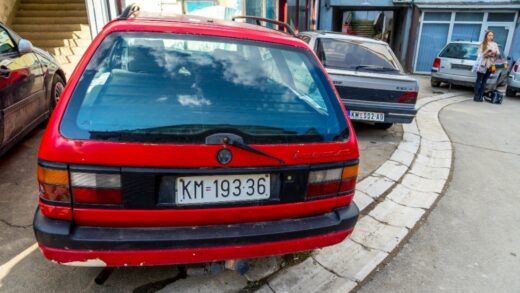The story (in Chinese) was first published on thepaper.cn in Sep. 2020, and then on World Vision Magazine in Jan. 2023.
This English version was translated from the Chinese original with DeepL, with the manual correction of some obvious mistranslations. I apologize for any mistakes made by this AI translation tool.
“Welcome to Kosovo! Go and get your vehicle insurance first.” The policeman at the checkpoint looked at my passport and driving license and said to me.
In 2018, I was on a self-driving trip around the world, with Kosovo being my 6th country/region in Europe. The vast majority of European countries have joined an agreement called the Green Card, which allows you to drive anywhere between member states with a single insurance policy, without having to buy separate vehicle insurance for each country. Kosovo was the first exception I encountered on the road and seemed to remind me that this is indeed a “different” place!
All I knew about the word “Kosovo” at that time was from the NATO bombing of the FRY in 1999. But almost 20 years have passed, and even Belgrade, which was devastated back then, has become a popular Internet destination. So what does Kosovo, the spark of that war, look like?
Contents
From newborn to “new10rn”
Driving into the territory of Kosovo, there was absolutely no sign of the imaginary war. Instead, the last country’s bumpy, ageing roads had suddenly turned into a rare Balkan motorway! And from time to time, roadside aid signs with the EU logo passed by, answering my questions about the source of funding.
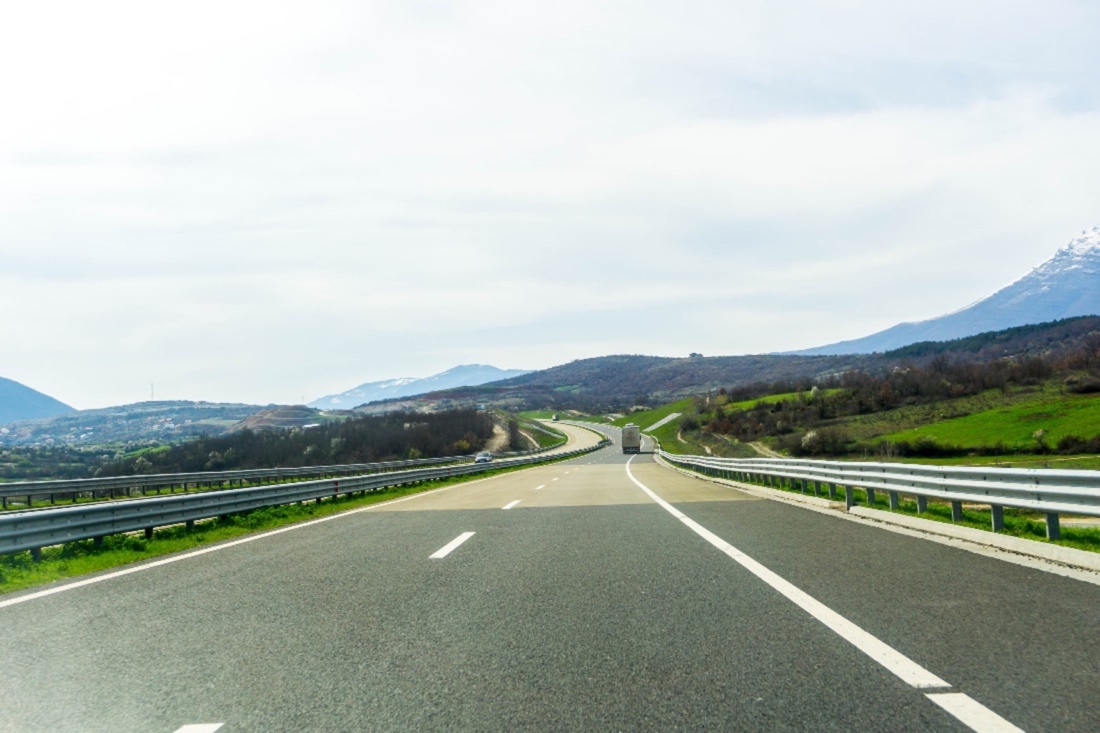
The short highway brought me to my first destination, Pristina, the capital of Kosovo. The current state of affairs in Kosovo today is the result of a long-standing conflict between the local Serbian and Albanian communities. Simply put, the Albanians, a Serbian minority, have long lived in Kosovo alongside the local Serbs. However, some of these radical nationalists, such as the “Kosovo Liberation Army” (KLA), wanted to return to their native Albania, along with their land, and even resorted to violence against all non-Albanian civilians there.
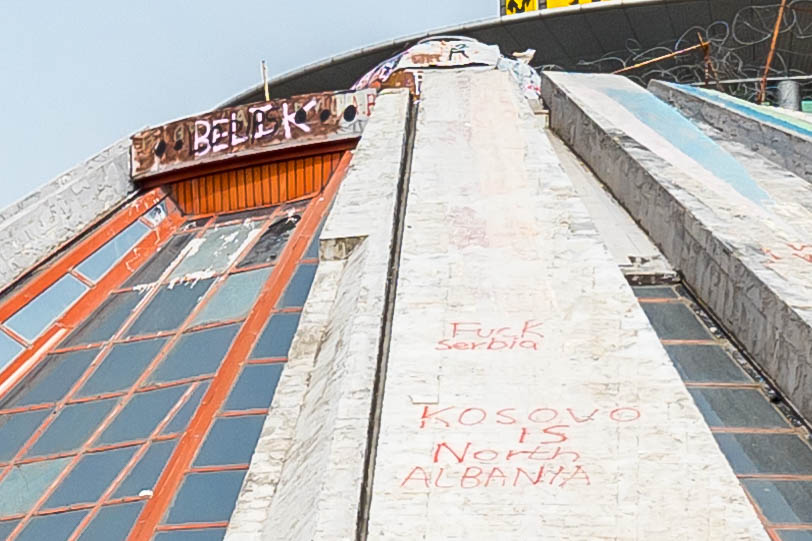
At the same time, the Serbian (former Yugoslav) Government, in order to consolidate its rule in Kosovo, had been pursuing a policy of assimilation by transferring Serbs into Kosovo and Albanians to other areas, even prohibiting at one point the teaching of the Albanian language in Kosovo schools. Finally, in 1999, NATO, led by the United States, bypassed the United Nations and conducted air strikes against the Federal Republic of Yugoslavia (now Serbia and Montenegro) for more than two months on the grounds that “the Government of the Federal Republic of Yugoslavia was violating the human rights of Kosovo Albanians”.
The war ended with the submission of the Serbs of the FRY, who were forced to withdraw all their troops from their territory, Kosovo, and replace them with the United Nations Mission in Kosovo (UNMIK). Legally, Kosovo remained part of Serbia, but the Serbian Government lost almost all control over it. It was not until 17 February 2008 that the Assembly of Kosovo unilaterally adopted a declaration of statehood, declaring “formal independence from Serbia”.
They claim to be the youngest country in Europe and have erected a giant sculpture with the word “NEWBORN” in the center of the capital, which has become a local landmark. In 2018, the year I visited, Kosovo had just celebrated its 10th anniversary of independence and the sculpture was changed to the similarly shaped “NEW10RN” to commemorate this momentous occasion.
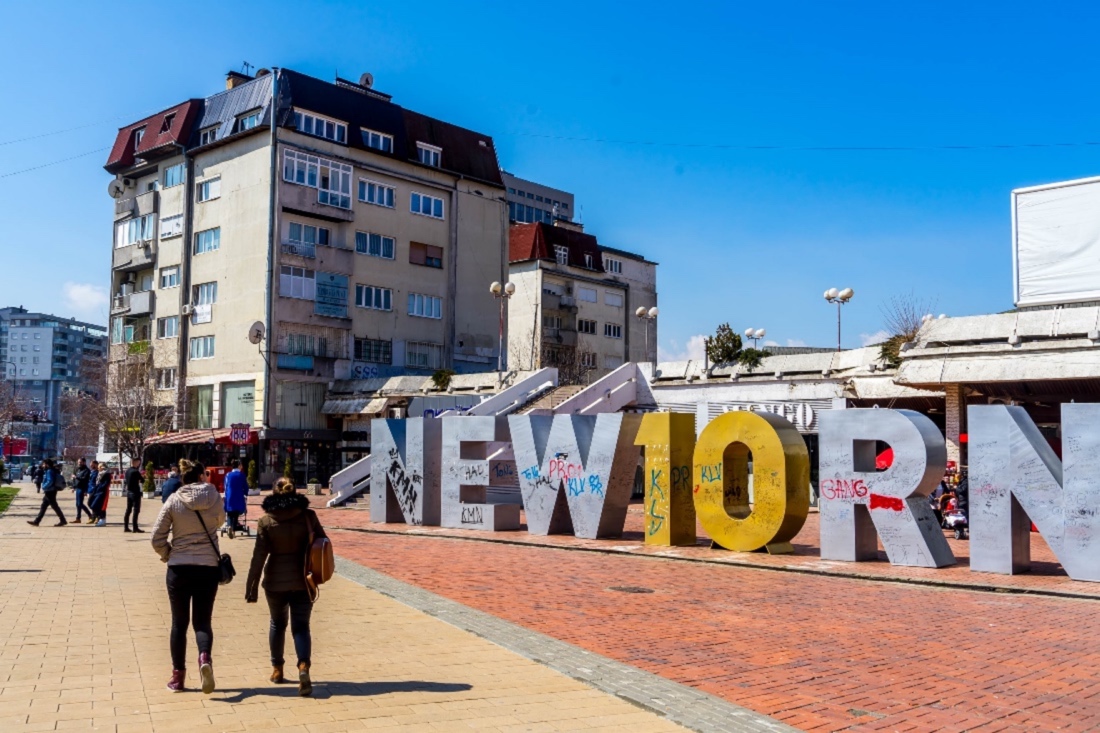

Ten years is enough to erase too many marks of time. On the streets of Pristina, visitors can hardly feel any traces of the war. The Serbian signs that once covered the streets in old photos have long since been replaced with Albanian. Simply put, to a tourist’s eye, everything here is no different from any other Balkan city, even the graffiti that covers the walls.
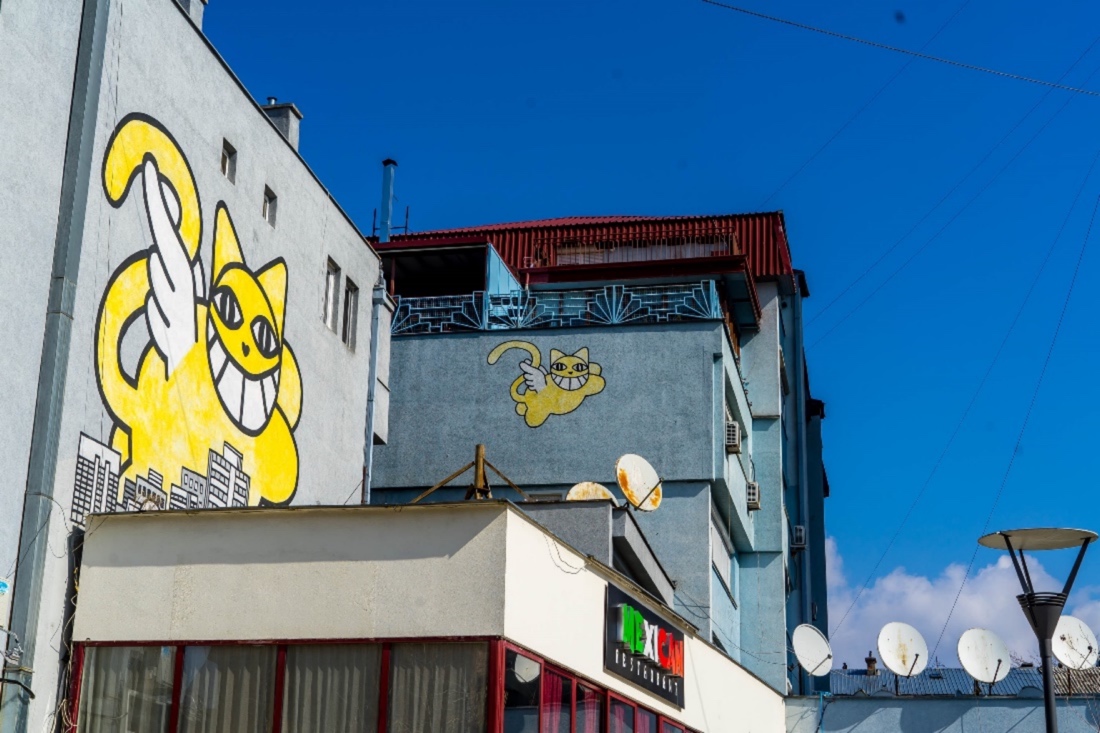
The National Library – integration or division?
The National Library is one of the few sights that appear in the Chinese travelogues of Kosovo. Completed in 1982, it is a typical example of the concrete utopian architecture of that era in Yugoslavia. Its bizarre appearance has attracted both tourists and controversy. In a 2012 edition of the British newspaper The Guardian, it was even ranked as “the third most ugly building in the world”.
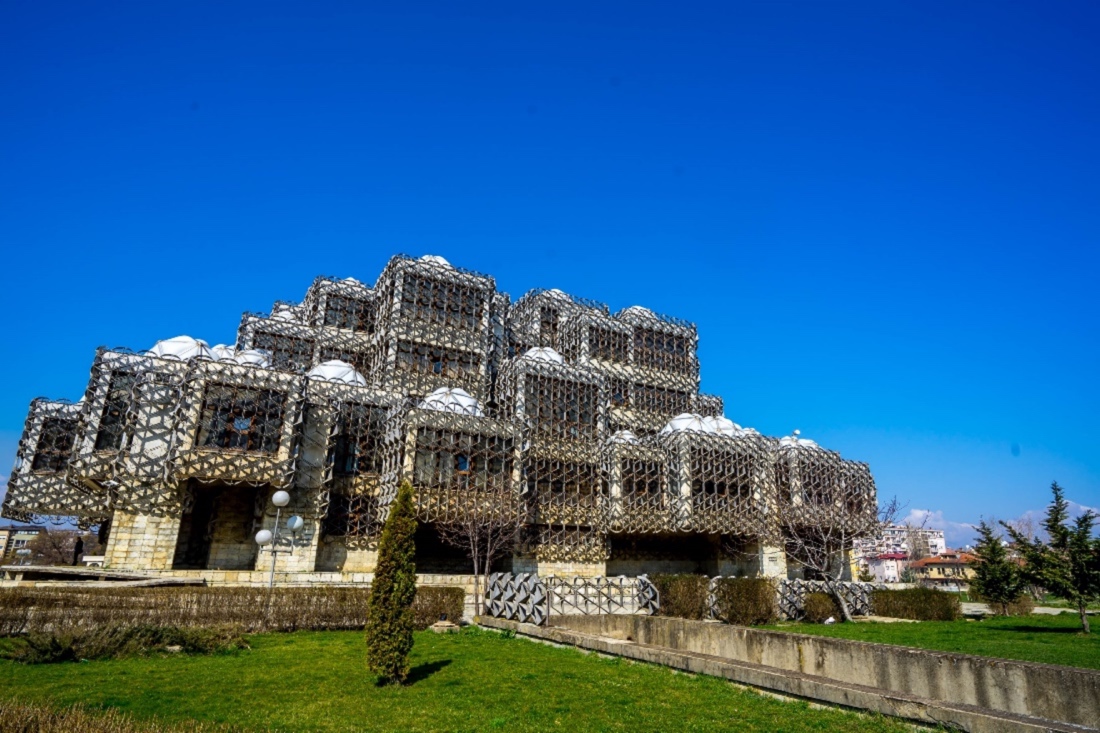
Yugoslavia in 1982 was continuing the last glory of the pre-dissolution period. The total of 7 countries now were all part of it. Catholicism, Orthodoxy and Islam, three once incompatible religions, and even a dozen different nationalities behind them, had a brief period of peaceful communion under a common communist ideal.
This same idea of communion is also reflected in the building: the eccentric and futuristic appearance, representing the communist ideals that were still popular in Europe; the 99 domes of various sizes, inspired by the fusion of Byzantine (Orthodox) and Islamic architecture; but it was designed by a Croatian architect from a Catholic region.
Ironically, less than 10 years after its inauguration, the former Yugoslav communism collapsed. The ensuing large-scale inter-ethnic civil war turned it into a refuge for displaced refugees from Bosnia and Herzegovina and Croatia. In 1999, during the Kosovo war, it became the command post of the Serb army against the Kosovo Albanians. It is said that 100,000 books were destroyed in the successive wars, including countless valuable ancient Albanian-language books.
Today, the ill-fated library has been returned to its original use. The interior, which has been restored with the assistance of the UN and the EU, makes it difficult to imagine the trauma of the war.
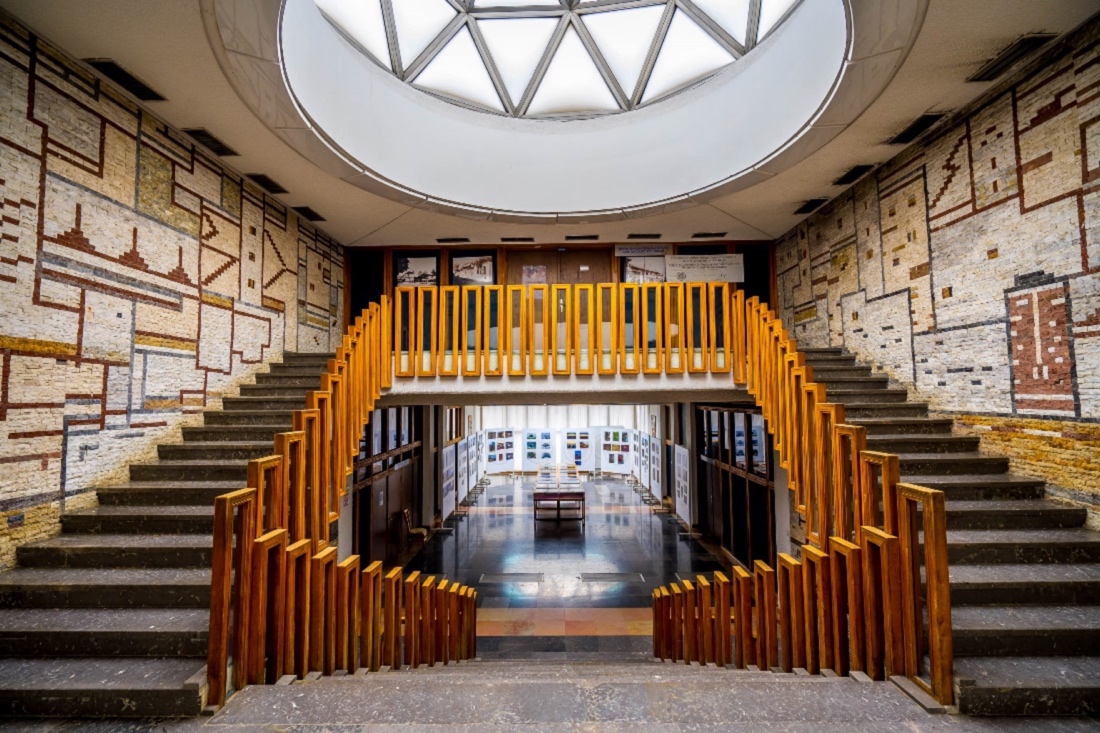
The national nuseum – oppression, hate and identity
Kosovo never existed as a state until its declaration of independence in 2008. How did those in power in this weathered country quickly create a popular identity for the young state? With this question in mind, I visited the national museum in Kosovo.
Most of the museum, with the exception of a bit on customs and history, is, not surprisingly, devoted to Kosovo’s struggle for independence. There is a special section, cleverly named after a chapter of the Bible – the Exodus (and also the Qur’an, which the Albanians believe in).
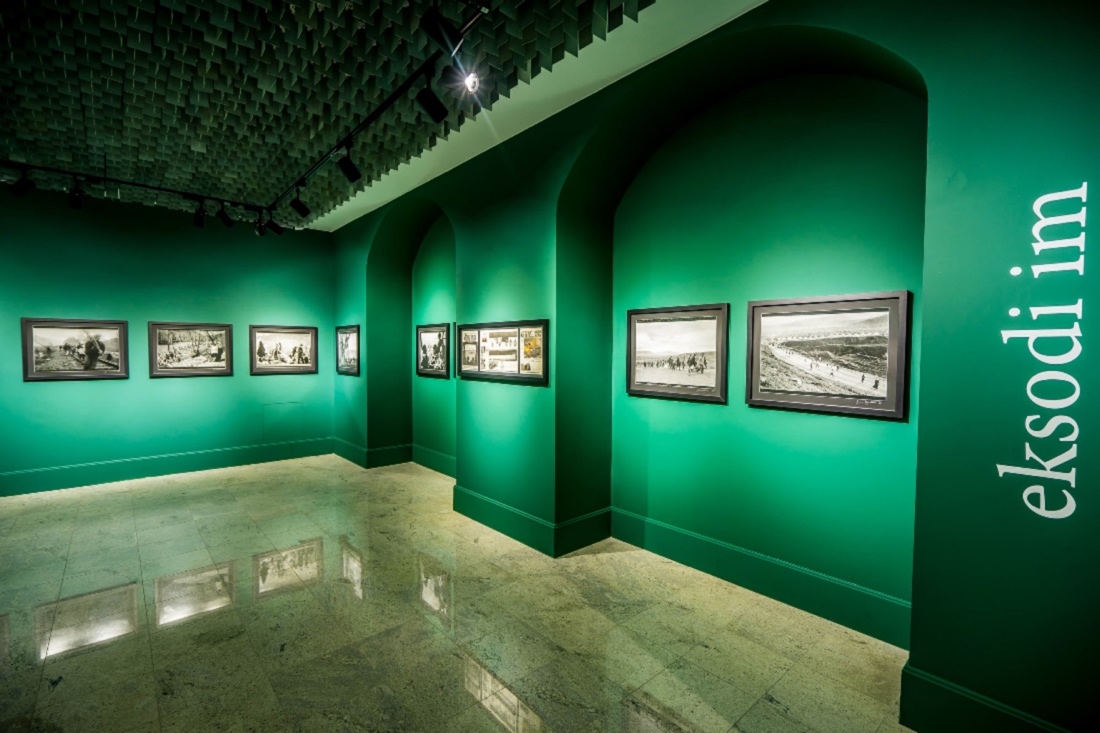
There weren’t many tourists here, so I had the exclusive services of a volunteer interpreter who said she was from a nearby university. Thanks to her, I had been able to understand what the pictures were talking about.
On the eve of the 1999 war in Kosovo, the Serb authorities suddenly forced the ethnic Albanian population of Kosovo to leave their homes and relocate to other parts of the country in order to weaken the forces of Kosovo’s independence. This forcible relocation led to one of the largest refugee crises in Europe since the Second World War. In a very short time, tens of thousands of ethnic Albanians were forced to leave their homes and, with all public transport packed, many had to make the harrowing journey with their feet. And it was this forced relocation, which caused an uproar in Europe, that kicked off the armed NATO intervention in the FRY.
![IE KOSOYAR
MON EXODE
ABIICEPOIIR
par AFRIM HAIRULLAHU
a Il est ni au L'-sovo fun Instituteur et if une mire couturiéro. Jusqu'au 31 mam. il vivait
i Pristina, cMnrN Xov-a=ipondant Lorsque sertn a chassés. _ lui et sa
d ariussiàcxherson=i
la Afrimraconteà
PRÉPARÉNIS\ffAlRES
NOIISMBIIIONSPRESOE
POUCIERS NOISON1fA11
IR\VERSERPRISIIU
IISVOUIIIENIOIIENOI]S
VOYIONSIES%IAHTS](https://drive2world.com/wp-content/uploads/2022/10/1665207507-ie-kosoyar-mon-exode-abiicepoiir-par-afrim-hair.jpeg)
The young interpretive volunteer actually wept as she spoke of this history. As a college student, it was clear that the great migration that took place 20 years ago, and the war that followed, did not leave her with any real memories. However, there is no doubt that this imagination of oppression and hatred for the oppressors has built up her mind so much that she could not help but feel emotion when explaining it.
“Here are the flags of all the countries that have recognized Kosovo. Now, more than 100 countries have recognized us as an independent state!” At this point, she changed her sad face and had an uncontrollable smile on her face.
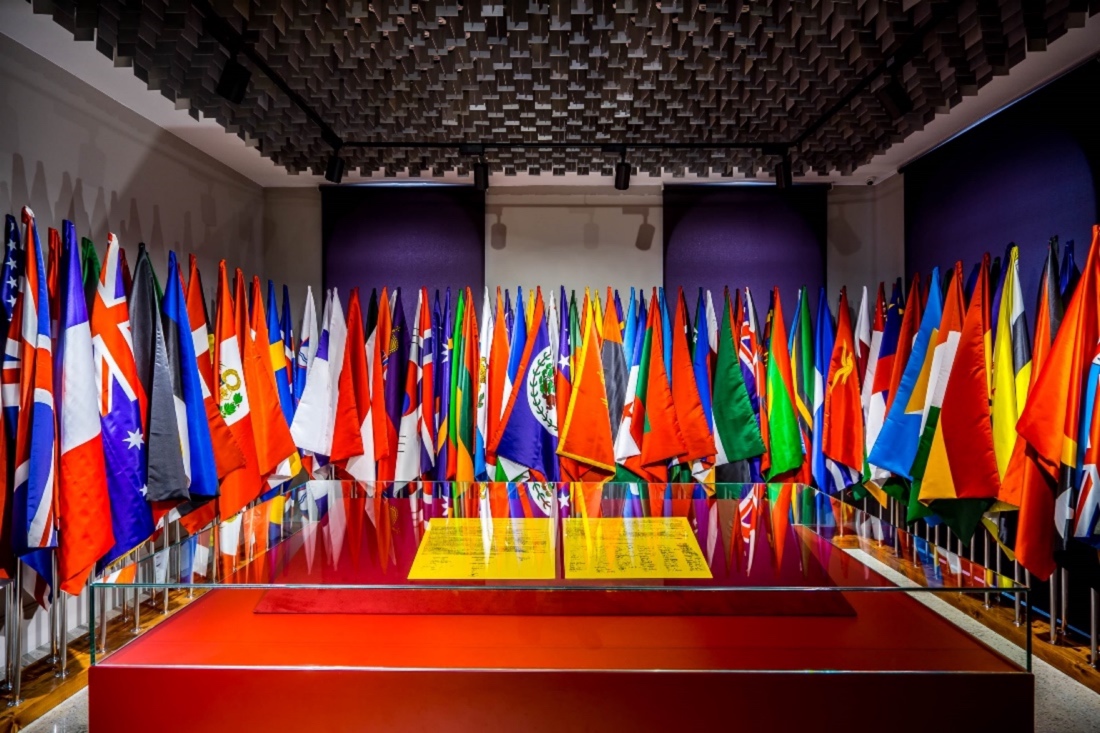
“What country are you from?” She asked me. Obviously trying to help me find my flag.
“China.” As someone from a country that doesn’t recognize Kosovo, I smiled a little embarrassed. How would she defuse this embarrassment?
What impressed me was that she gave a professional and decent response.
“Unfortunately, China has not yet recognized us. But we have always had a very good relationship with the Chinese people.”
I must say that she is absolutely right. Despite the fact that Kosovo has never been officially recognized by China, China has established an economic and trade office in Kosovo to facilitate civil contacts between the two places.
Kosovo, too, has always pursued a “one-China” policy – even when the Taiwanese authorities rushed to announce their recognition of Kosovo just after it declared its independence. But Kosovo has never returned the favour: it has neither recognized the legitimacy of the Taiwanese authorities nor allowed their flag to appear in this hall.
Prizren – tomorrow for Kosovo?
I would never have been able to imagine Prizen if I hadn’t seen it with my own eyes.
If in Pristina one sees all of Kosovo’s past, in Prizen perhaps everyone can get a glimpse of Kosovo’s tomorrow.
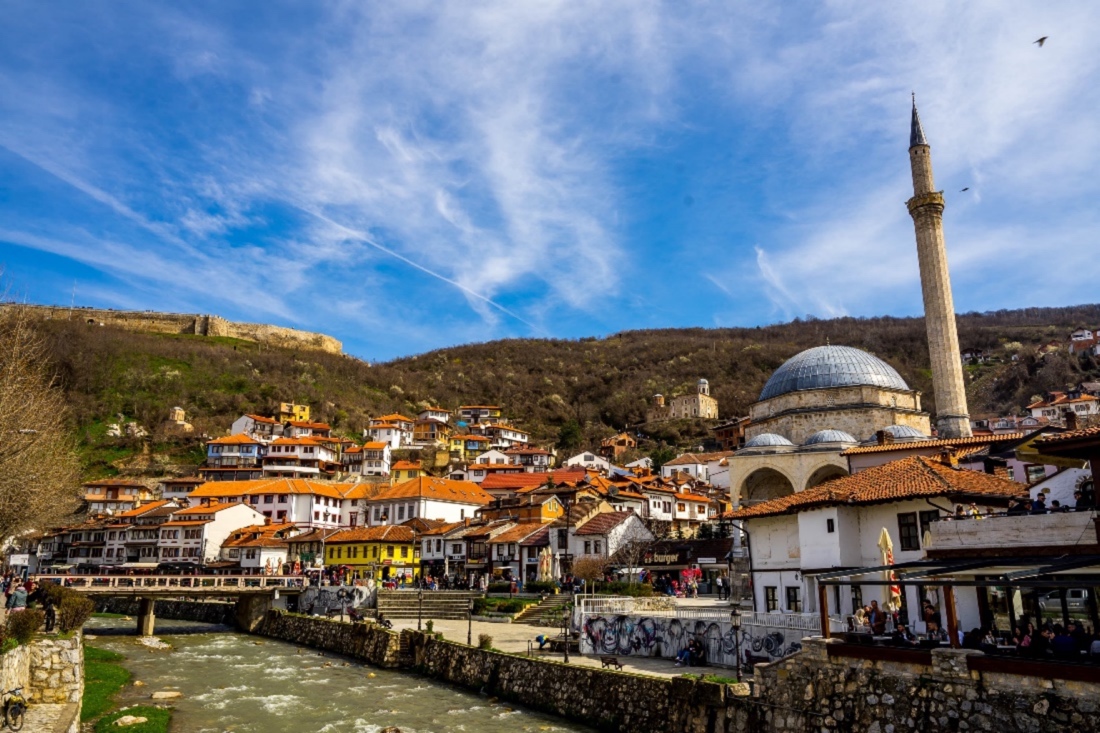
It is a dream town hidden in the landscape. When you’re looking at the pure Ottoman architecture in red and white under a blue sky, you turn around and see the snow-capped mountains in the distance.

The standard of development and operation here is not only far superior to that of Albania next door, but also to that of Turkey, the leading tourist destination in Southeast Europe. Even the prices are as low as in Turkey. For this reason, it attracts a large number of European tourists. It’s so crowded that it almost looks like a Chinese Netflix town, not like Europe.
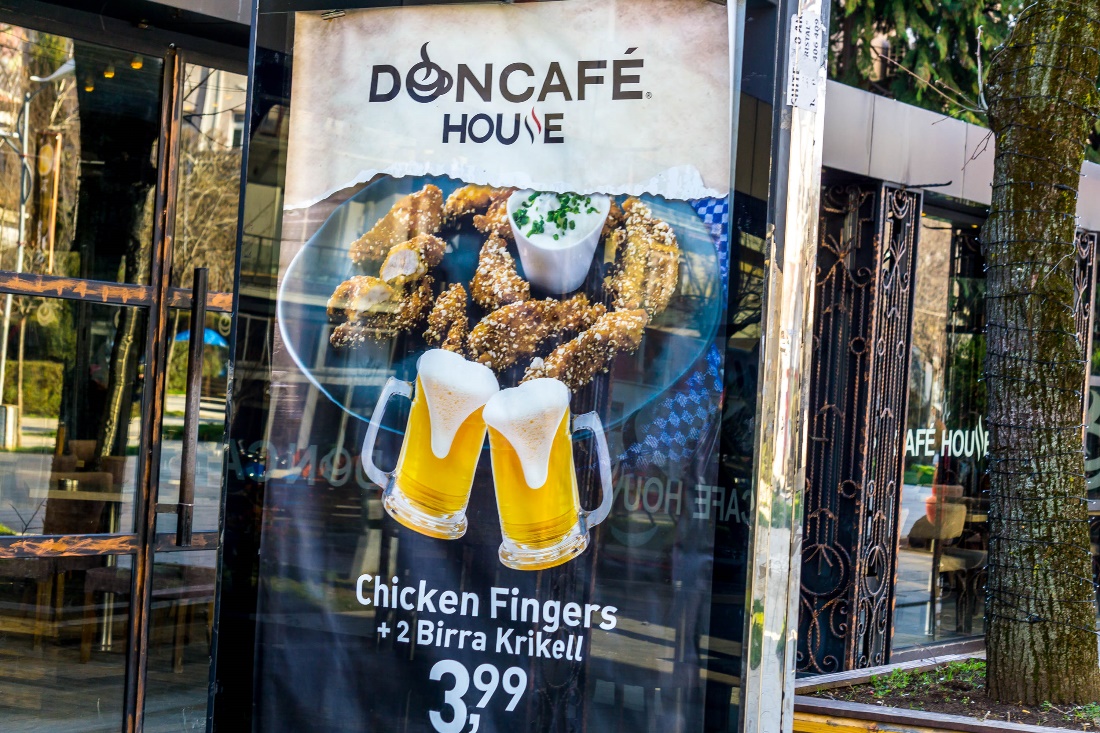
I would never have guessed that this was the same war-torn region that was on TV over a decade ago! The only thing that reminded me that I was still in Kosovo was the statue of a war hero that stood in between the shops.
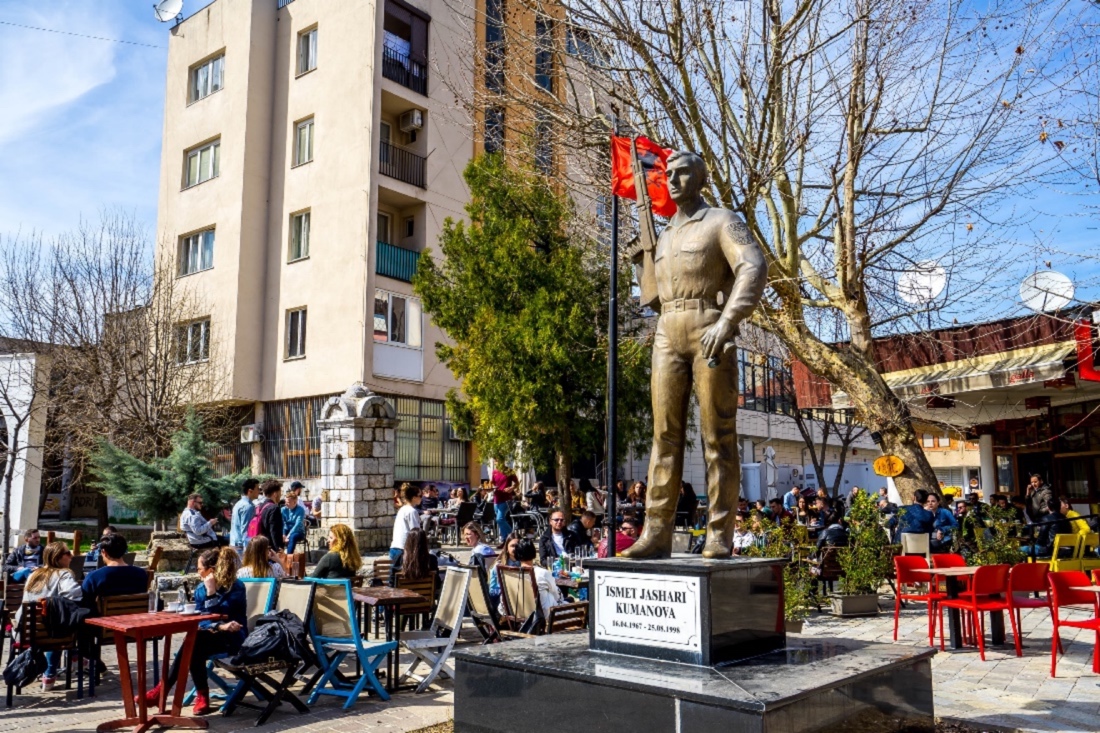
In fact, when the war first ended, Kosovo was far from the wonderful place it is today. A lot of buildings were destroyed and countless civilians were left homeless. Today, you can find many modern and avant-garde buildings among the period old cities throughout Kosovo – built on the ruins of the former war.

Also ruined by the war was the economy of Kosovo. Kosovo, once part of Yugoslavia for a long time, did not have an independent economic system of its own. With the collapse of the Yugoslav economy in the latter part of the country, the repeated battles and the mass exodus of the local population, Kosovo’s already fragile economy was further aggravated. At one point in 2001, immediately after the war, the unemployment rate reached a staggering 57 per cent.
After decades of economic suffering and dependence on massive aid from Europe and the United States, Kosovo is now making small strides in tourism, such as in Prizen. However, the unemployment rate of 25.9 percent is still the highest among European countries and means that Kosovo still has far too long to go before its economy recovers.
Serbs in Kosovo – a minority within a minority
Historically, Serbs and Albanians have long mixed with other ethnic groups (e.g. Roma) in the land of Kosovo. However, the strife of recent decades has dramatically affected the demographic composition of the territory. The Serb government has used executive orders and the military to expel Kosovo’s Albanians, while the Kosovo Liberation Army has used near-terrorist attacks to drive out all others.
When the fighting subsided, most of the expelled Albanians were able to return to their homes. However, other communities, especially the Serbs, have had difficulty returning to Kosovo, where they have lived for generations, for a long time because of fear. This has led to the fact that less than 5 per cent of the total population of Kosovo is now Serbs.
There are many reasons for Serb fear, but the main one is the ultra-nationalist “Kosovo Liberation Army” and its remnants, whose disarmament was included in the 1999 armistice agreement, in addition to the withdrawal of Serbs. The 1999 armistice agreement included the disarmament of the KLA in addition to the withdrawal of Serbs. The subsequent Albanian regime, however, has always been sympathetic to the KLA of the same ethnic group and has not completely banned it, even to the extent that some of its members have joined the new government of Kosovo in a “new guise”. To this day, brand new KLA (“UÇEK”) symbols can be found on many buildings in Kosovo.
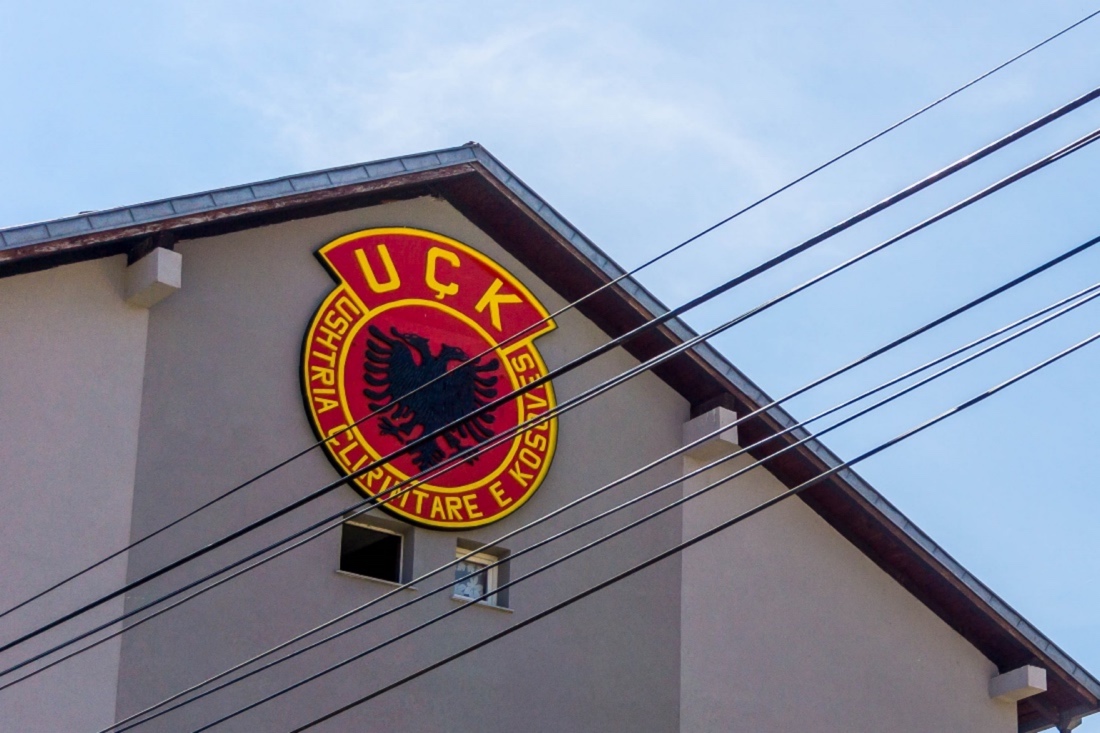
Albanians in Kosovo were once considered a minority in Serbia. Today, however, the Serbs living in Kosovo are a veritable minority within a minority. They are scattered in more than a dozen settlements, large and small, mostly under the authority of the Kosovo Government, while retaining their ethnic identity.
The Constitution of Kosovo provides that the State shall have no State religion and that all races and religions shall be equal. This seemingly beautiful provision has encountered numerous obstacles in its implementation. Serbian, like Albanian, is the official language of Kosovo. Yet everywhere you travel in Kosovo, you see Serbian signs on road signs that have been painted over with black paint. This kind of hatred is chilling.
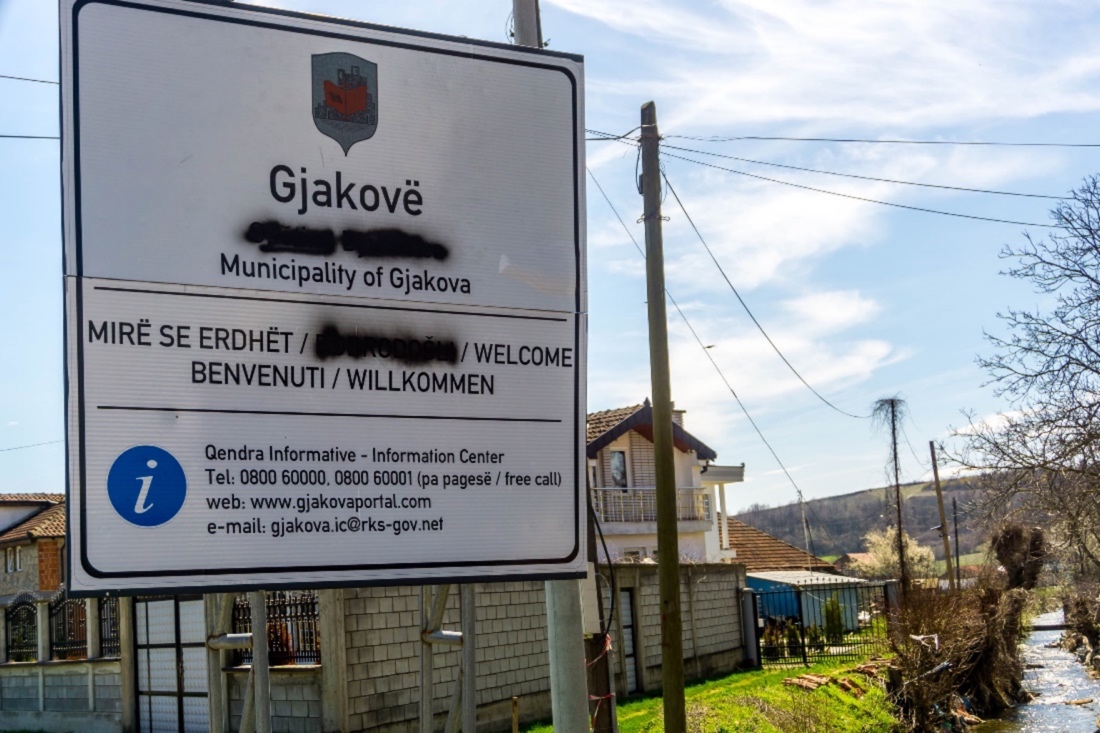
Next door to the National Library in Pristina is Kosovo’s most famous ruined building, the Cathedral of Christ the Redeemer, which was nearly complete before the outbreak of war in 1999, with only the interior finishing touches. Today, 20 years later, it remains as it was when construction stopped. Although the courts in Kosovo have ruled that it is the legal property of the Serbian Orthodox Church, the University of Prishtinë/Priština, which owns all the land rights around the church, has consistently blocked any work on it.
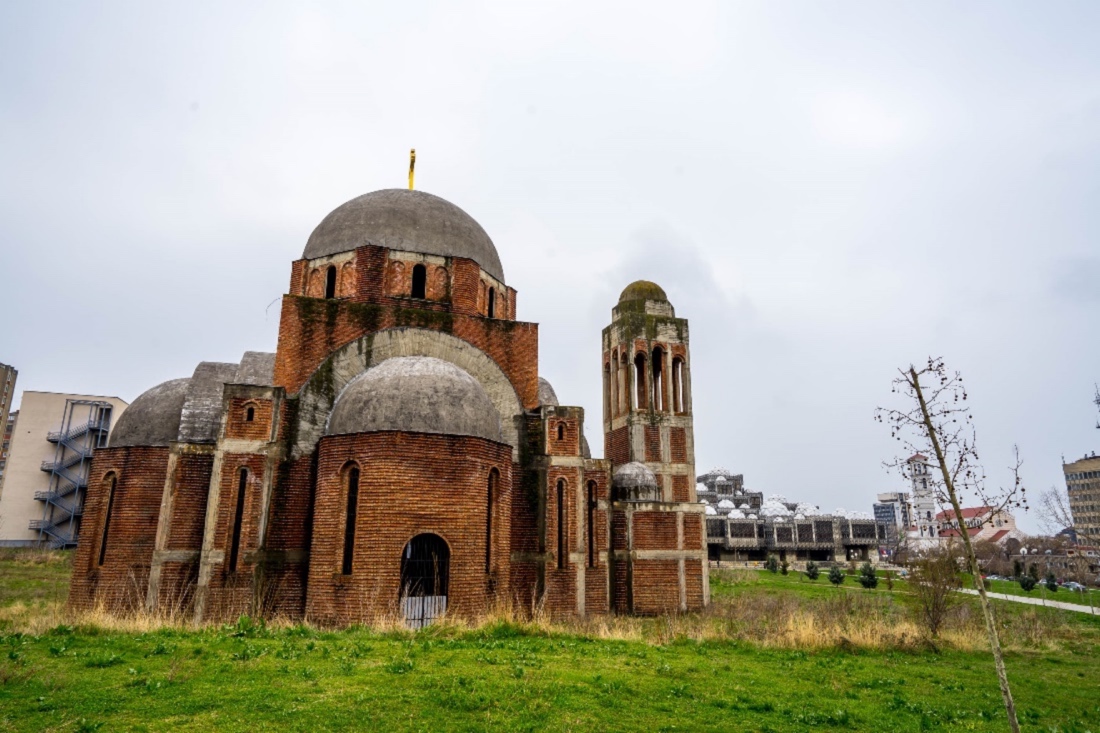
And those Serbian churches that were completed and survived the war were not really in a better position. Such as the Orthodox Church in the western city of Pejë. It has an old and ornate building that was even selected as a World Heritage Site.
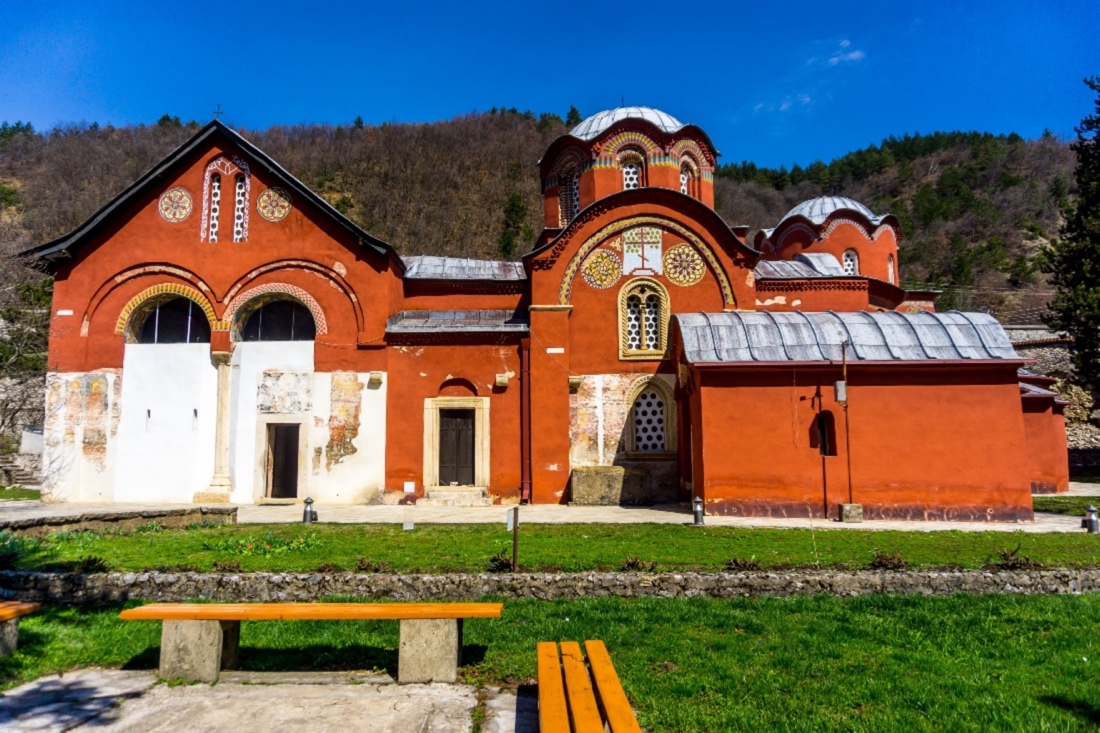
At the church gate, however, is a heavily guarded Kosovo post. Even tourists must register their passports before they can enter. And church personnel are severely restricted from going out, even for shopping, and must be accompanied by Kosovo military personnel (officially, “to protect Serb clerics from Albanian extremists”).
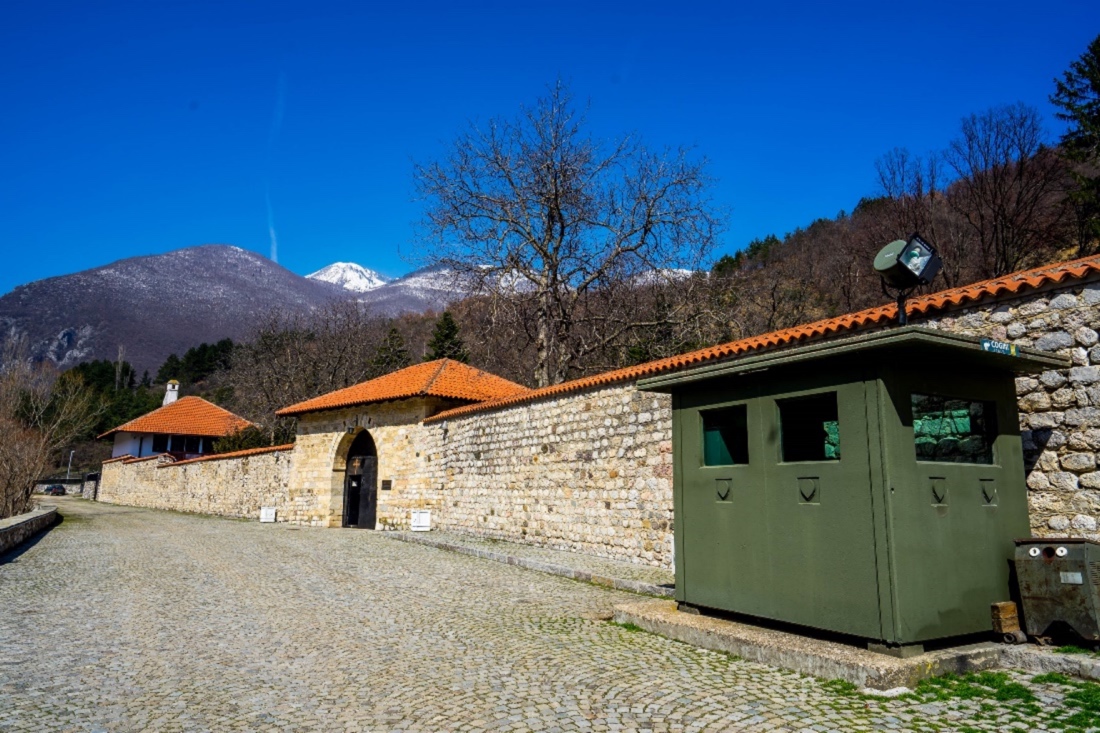
Why are the Serbs so attached to this part of Kosovo that they not only refuse to recognize the status quo of Kosovo’s independence, but even continue to run their church despite all the restrictions?
In addition to the sentiment that “not an inch of territory must be lost”, it is also crucial that Kosovo is the birthplace of the Serbian national spirit: the 14th-century Grand Duke Lazar, whose status in the hearts of Serbs is comparable to that of China’s Emperor Qin and Han Wu. He defeated the invading Turkish Ottoman army, reunited the disintegrating Serbian Empire, and for a time made it the strongest period in history. As a result, he was also known to the Serbs as Tsar. A statue of him “pointing the way” now stands in the centre of Mitrovica, the largest Serb settlement in Kosovo.

He was born in Kosovo, not far outside Pristina, which has now become one of the most important spiritual places for Serbs. Also in that vicinity is the most important church of the Kosovo Serbs: the Gracanica Monastery, also on the World Heritage List.
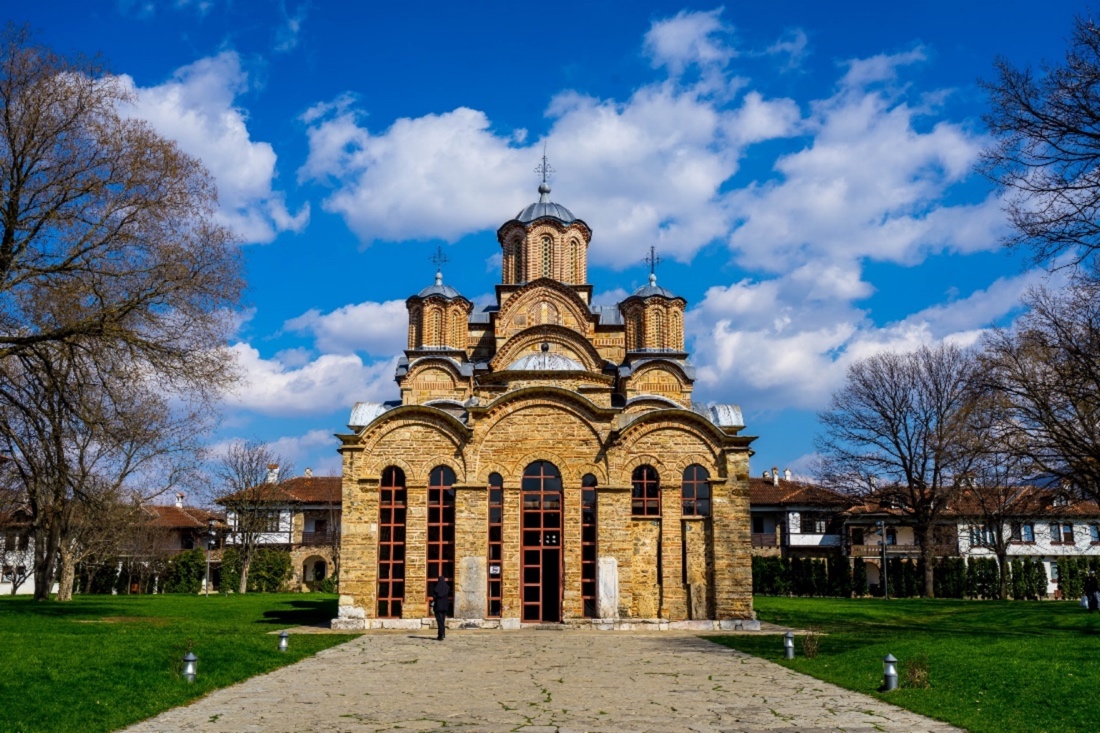
Beneath its seemingly mundane exterior is nearly 700 years of history. It was built in 1321, just about the same age as that national hero, Lazar. And its architectural shape has provided inspiration for countless churches throughout Serbia, even the most familiar Serbian landmark: the Church of St. Sava in Belgrade.
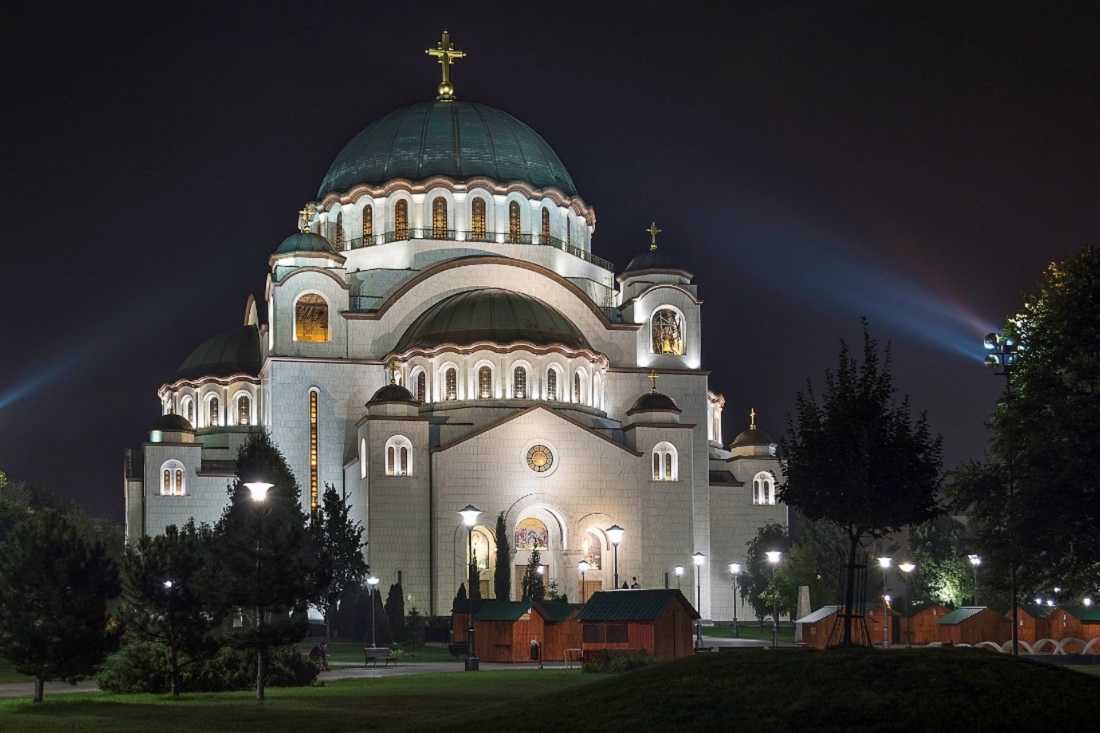
In Chicago, USA, the local Serbs have even built an identical-looking “New Gracanica Monastery”.
Grand Duke Lazar also died in Kosovo, in 1389, in a tragic battle with the Ottomans. The only “lucky” thing was that his enemy, Murad I, the first Ottoman sultan, also died in that battle. The Albanians, on the other hand, converted to Islam precisely because they were ruled by the Ottomans. Is it not ironic that in Kosovo today, Serbs and Albanian Muslims continue the same strife as they did more than 600 years ago?
Mitrovica – witness a protest
Today, only one half of the completely Serbian town of Kosovo remains, namely “Mitrovica”, where the statue of Lazar is located. A pedestrian bridge separates the Albanian quarter on the south bank from the Serbian quarter on the north bank, dividing the small town into two distinct halves.

Today, the pedestrian bridge is open to residents and visitors on both sides of the river, thanks to the Brussels Agreement of 2013. For more than a decade before that, North Mitrovica was a “Kosovo within Kosovo”: while the Serbian Government did not interfere with the Kosovo authorities’ governance of most of the territory, it kept control of the Serbian city in Kosovo, and kept its connections to the rest of Kosovo almost interrupted.
The 2013 agreement allowed Serbia to formally recognize Kosovo’s jurisdiction over all Serb areas, while withdrawing its own law enforcement personnel, and Kosovo agreed to a degree of autonomy for its Serb residents. As a result, however, it has become a veritable “three-way zone”: the Kosovo government can’t enter, the Serbian government can’t control, and the entire city is in a state of near-anarchy due to the resistance of the local Serb population. Before I got here, my Kosovo friend advised me not to go there, at least not by driving across the river. I listened to the latter part of his statement, parked my car on the safe southern bank and walked across the bridge on foot.
The monument erected at the bridge on the other side in memory of the Serbs who died at the hands of the KLA is a silent protest to the other side.
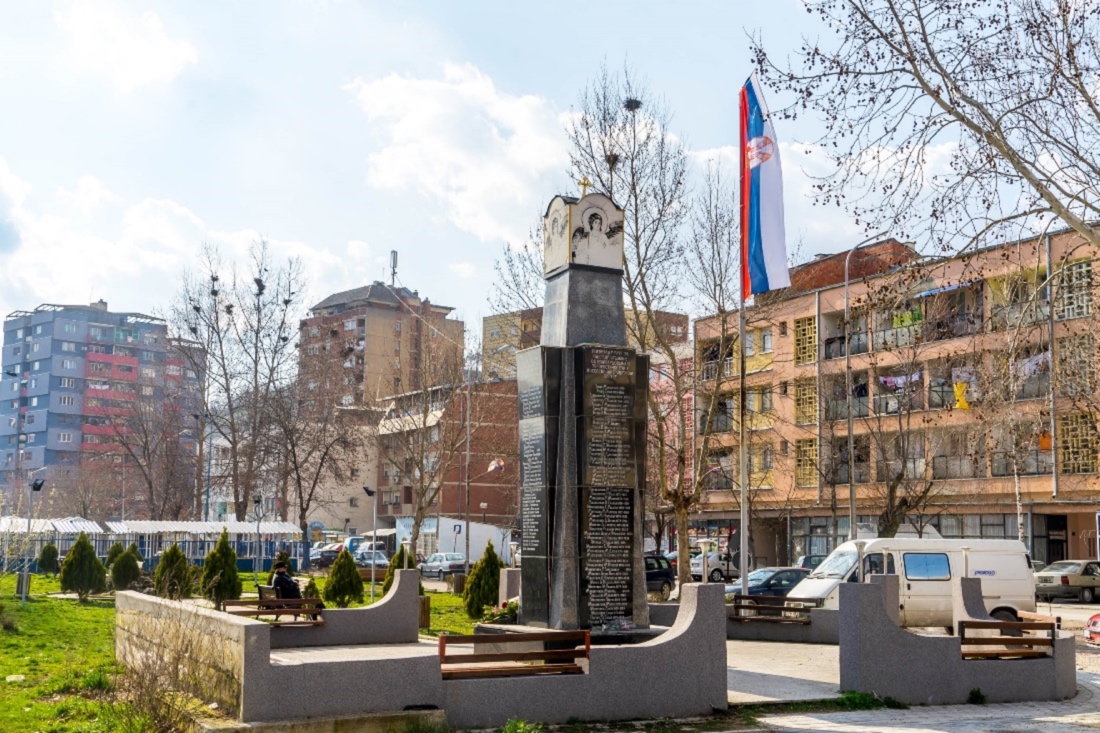
When you get to the north bank, you no longer see any imagery related to Kosovo, instead you see Serbian flags, and Serbian writing, banks, license plates, and even currency, as if it were still under Serbian jurisdiction.
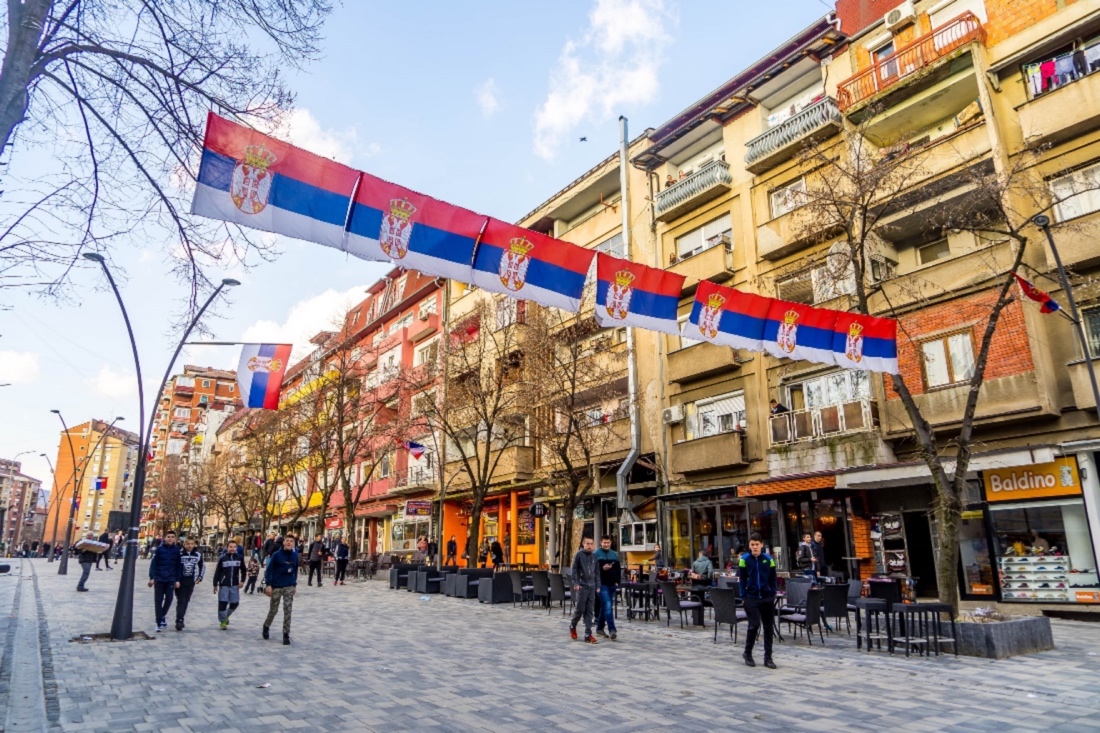

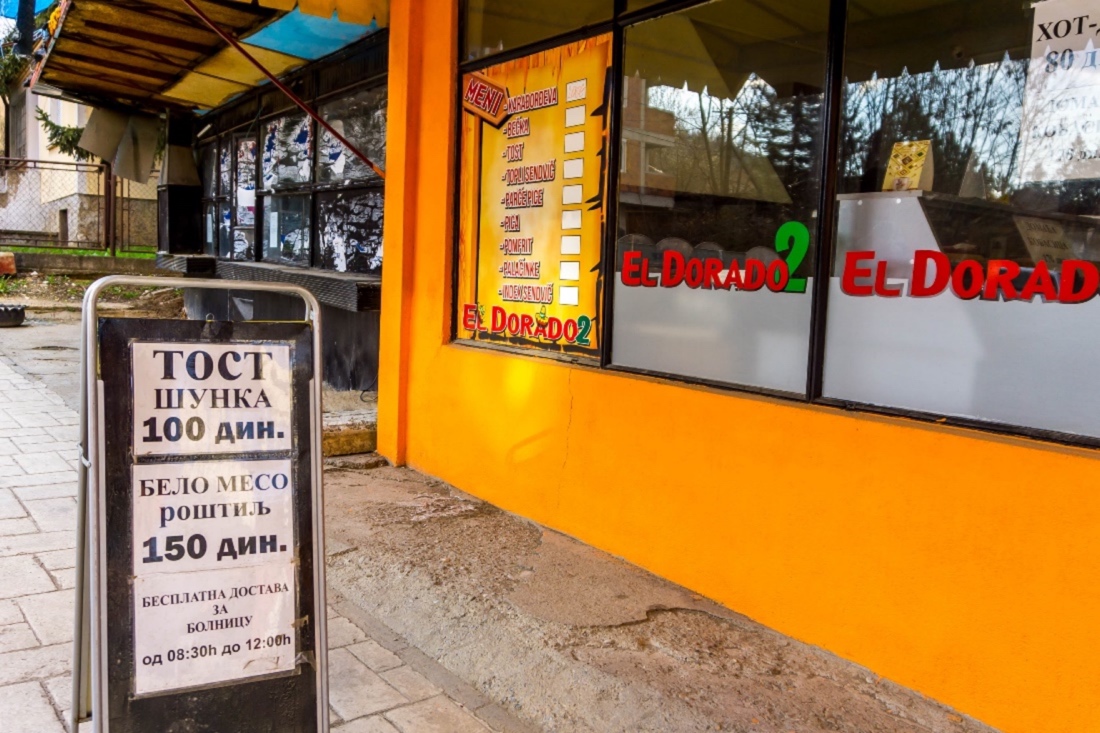

In the distance, at the top of the hill, still stands one of the most famous socialist monuments in Yugoslavia. And next to it is a Serbian church with a young man sitting on the railing, smiling and greeting me, and opening his Instagram for me to follow.

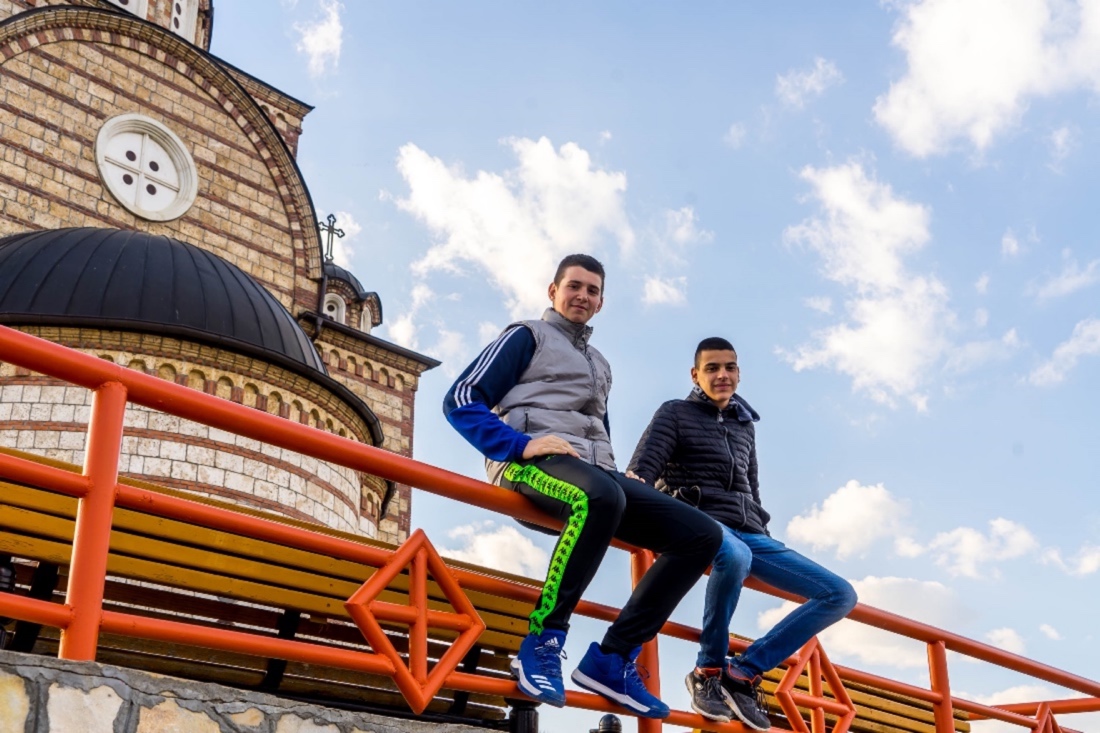
So far, everything I had seen was so peaceful that I almost doubted my Kosovan friends’ warnings. On the way back, however, I encountered a group of students who were furious and protesting along the street. They waved black flags, chanted unintelligible slogans, and raged as if they were about to tear the whole street apart. I asked the people around me and hurriedly searched the Internet to find out what they were protesting against.

Just two days ago, a senior Serbian official came here to participate in a seminar organized by local Serbs on “The future of peace between Serbia and Kosovo”. In the middle of the meeting, a team of heavily armed Kosovo police came in, armed with machine guns, and arrested the Serbian official, took him to Pristina and then deported him. The reason given by the Kosovo authorities afterwards was that the person had been promoting hate speech and affecting Kosovo’s national security.
The Mitrovica Serbs responded by building a barricade at the bridge with mounds of earth and stones, blocking all Kosovo law enforcement vehicles from the south from entering the city, and making the standoff here tense and explosive. And it was this humble barricade that was the end of that student march. And the large number of Kosovo police on standby across the street were watching intently for any move they made.
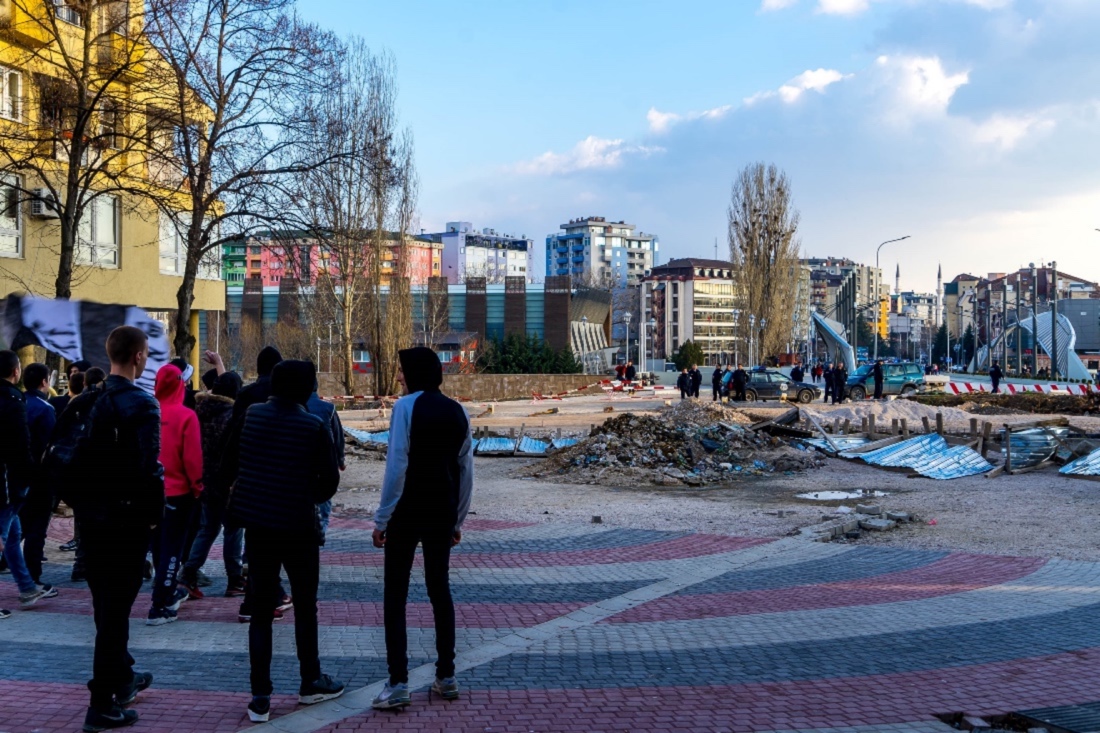
I had to wait long enough for the protesting crowds to all disperse and the police to gradually lift their guard before I dared to carefully cross the barricade and head back to the other side of the bridge. And life for the people on the south side was as peaceful as ever, completely untouched by the tensions on the north side. The family I met in the parking lot greeted me with a smile, and we even chatted happily about the trip.
The epilogue
On my way out of Kosovo, I saw a strange building on the outskirts of Priština with the American Statue of Liberty on top. I wonder what the owner of the building was trying to convey with this statue: a desire for freedom or a desire for the country behind Lady Liberty?
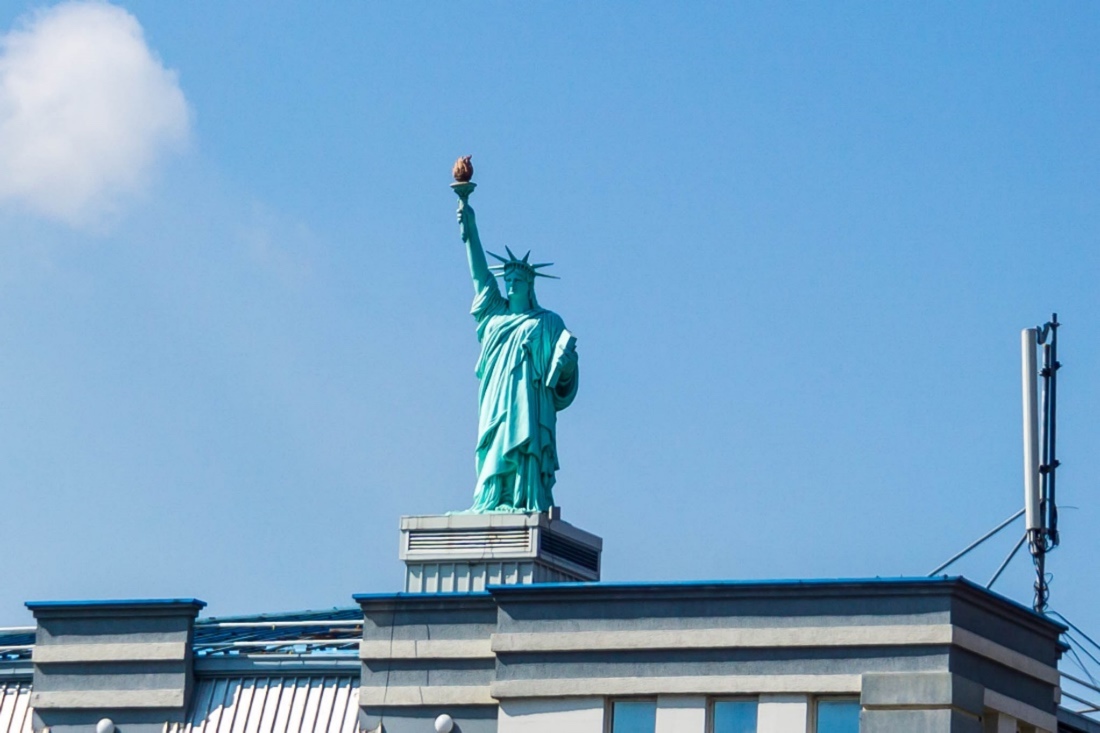
Just a week ago, under the “good offices” of United States President Trump, Kosovo and Serbia announced a handshake and the establishment of normal economic relations. At the same time, Kosovo actually established diplomatic relations with Israel and became the first Muslim-majority state to locate its embassy in Jerusalem. It is hard for me to imagine that the government of Kosovo, which describes itself as an oppressed people, has so easily abandoned its fellow Muslim Palestinians. The Palestinians, who are losing their homes to the US and Israel, are the most sympathetic and truly oppressed people in the world.
It may be true that some Kosovars have some freedom. But the unemployment rate of more than a quarter, and what I see in the Serbian community, makes me realize that they are still far from real freedom. As for the country behind Lady Liberty, all I know is that a small place like Kosovo doesn’t even have a chance to be their pawn, but a lamentable and pathetic chessboard.
The only truth in this world is the power of the state.

